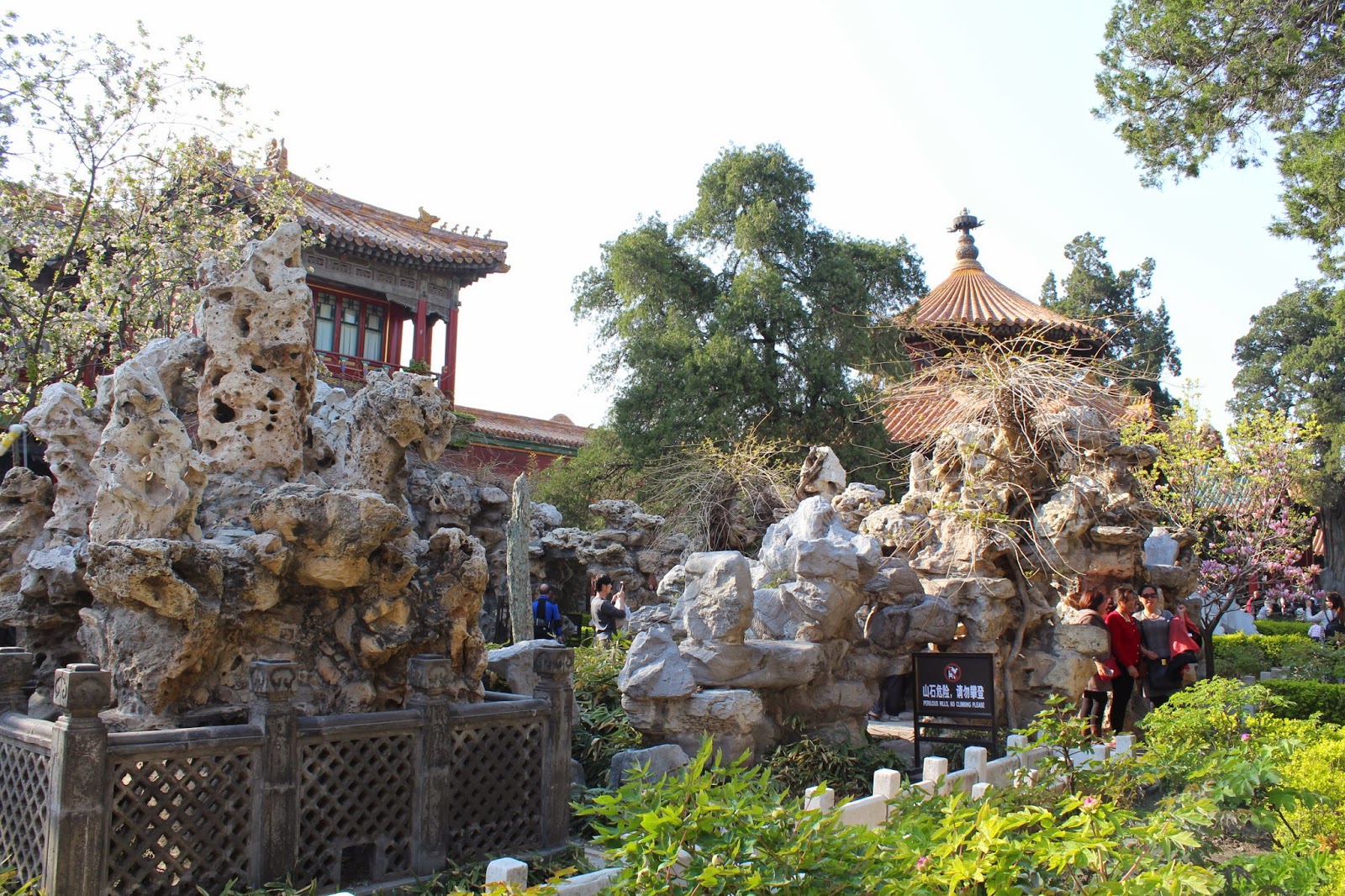After a great lunch at a local Beijing restaurant ....
The afternoon was dedicated to Tian'anmen Square and the Forbidden city. Tiananmen Square is one of the largest public square in the world, with a surface of 440,000 sq meters which theoretically would allow 1 million people to gather here. It has great cultural significance as it was the site of several important events in Chinese history. The events that remain in our memory are recent ones, including Tiananmen Square protests of 1989, which resulted in military suppression and the deaths of hundreds, if not thousands, of civilian protestors. One of the most famous images that appears during these protests was when a man stood in front of a line of moving tanks and refused to move, which was captured on Chang'an Avenue near the square.
At the time of our visit, the pure blue sky gave the Square had a much friendlier look ..although, if one paid a closer look, those imposant lighting contraptions were also full of cameras ...should something suspicious happen and not be caught by the military guardsmen watching all over the square. And yes, should there be someone wanting to re-enact the self-immolation incident of 2001, there are plenty of guards with protective shields and fire extinguishers lining the perimeters of the square. We did not think that taking their picture would be such a good idea....


The vastness of the square gives it an imposant look; it is surrounded by different buildings and commemorative monuments, all bearing the "elegant" (Russian influenced) style of communist architecture!
Fortunately, blossoming trees made the site more palatable.
But the focus of the square is the entrance to the Forbidden City, all walled up, but now open for exploration. Here we go .... under the image of Mao at the first gate ... see above! But then, we are in! What a square! The real thing!
If you have seen the movie "The Last Emperor", some of the buildings will look familiar. But the movie was restricted to a small selection of building; there is sooo much more to see.
Construction lasted "only 14 years and required more than a million workers. We will later on see that these gigantic human labour construction projects will continue into current times. The numbers are just mind boggling.
The City is a rectangle, with 961 metres (3,153 ft) from north to south and 753 metres (2,470 ft) from east to west. It consists of 980 surviving buildings with 8,886 bays of rooms (by oral tradition, there should have been 9,999 rooms, which is one less of 10,000, the latter number of chambers was reserved to the emperor in his afterlife).
An aerial image (Wikipedia) gives us an ideal of the dimension of this city within a city.
The Forbidden City is now the Palace Museum, whose extensive collection of artwork and artifacts were built upon the imperial collections of the Ming and Qing dynasties.
However, most of the museum's former collection is now located in the National Palace Museum in Taipei (not mainland China!), because at the end of the Chinese civil war, Chain Kai-Shek had most of the treasures of the city moved to Taipei, where only a small fraction is on display. It is a rotating collection, and we learned that it would take about 35 years to show all the items taken from the buildings in the Forbidden City. So, apart from the buildings there are no major artefacts to be admired within these buildings.
Moving closer and closer to the inner court yards and through another layer of defences ...
we arrive at the Queen's and concubines (3000!) quarters ...
and the gardens (as one can see, we are not alone).
The afternoon was spent exploring this vast area as much as time permitted (guided tour!!!), before we would pass through the north gate back into Beijing proper.
But the day is not over - yet. A visit to one of the last (and now protected) Hutongs.
In Beijing, hutongs are narrow alleys formed by lines of traditional courtyard residences. By linking these "Hutongs" together, they formed a larger neighbourhood; hence, the word hutong is also used to refer to neighbourhoods.
Given the explosion of the population since the mid-20th century, the number of Beijing hutongs has dropped dramatically as they are demolished to make way for new roads and high rise buildings.
(Toronto population has now reached 2.5 millions, Canada 35 millions but Beijing alone has already reached 21.5 millions!).
However, recently some hutongs have been designated as protected areas in an attempt to preserve this aspect of Chinese cultural history. And we are going to visit one of those places.
To do so ... a rickshaw ride had been organized to bring us into these neighbourhoods and through the narrow streets. What great fun! And what an experience. Our local (Beijing) guide "Tom" recounted his days when living in one of these courtyard residences.
Around 21 hours back at the hotel; tired but satiated, and looking at each other as if we were in a dream. What a trip!!!!!
What will the next day bring????


















No comments:
Post a Comment